Review of the Polaris PVCR 1126W robot vacuum cleaner: stylish hard worker - representative of the Limited Collection
In 2017, Polaris released a new robot vacuum cleaner PVCR 1126W.The model in the price segment of about 15 thousand rubles has already been tested by customers and has received a number of reviews from real owners, which indicate both positive and negative aspects identified during operation.
- Long operating time on one charge
- Quiet enough
- Avoids obstacles
- Affordable price
- No virtual cleaning space limits
- Difficult to remove the dust container for cleaning
- Doesn't clean in corners or near chair legs
- Gets stuck under low furniture
In this publication, we will get acquainted with the technical parameters of this robot, reviews of its work, and compare it with competing devices from leading manufacturers in the field of automated household cleaning products.
The content of the article:
Features and characteristics of the model
This model was released in a limited number of copies, as evidenced by the addition of “Limited Collection” to the official name of the vacuum cleaner. In terms of technical parameters, it resembles the previously released and well-proven development 0926W.
An analysis of the main characteristics will allow the potential buyer to determine the capabilities of the device for his specific case.
Main technical characteristics
The Polaris PVCR 1126W vacuum cleaner is made of high-quality black plastic with a tempered glass cover.
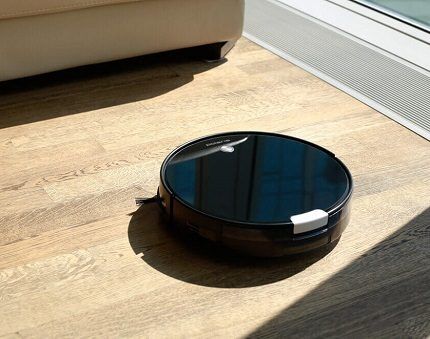
The spring-loaded bumper, made of high-quality soft plastic, has a small stroke. The vacuum cleaner has enough power to process not only hard surfaces, but also carpets with medium and long pile lengths.
A half-liter dust collection container facilitates non-stop cleaning of the apartment when it is only slightly dirty.
The unit for wet cleaning of hard surfaces includes a container for collecting water and a cloth made of special microfiber. Wetting occurs automatically, which allows the robot to operate in this mode for 30 minutes without adding water to the tank.

The sweeping of debris towards the suction hole is carried out by side brushes and a central turbo brush, which are standard for all devices of this type. It is equipped with a separate electric drive, which turns on simultaneously with the motor.
The following consumables are additionally supplied with the vacuum cleaner:
- microfilter;
- HEPA filter;
- special brushes for cleaning filters and dust collector.
The robot is equipped with a sound indication that is quite loud in volume, so you should not turn it on when people are sleeping.
Unit power supply features
The robot is equipped with a Li-Ion battery with a capacity of 2600 mAh. For this slightly powerful vacuum cleaner model, such a battery allows for long-term battery life.

Lithium-ion batteries compare favorably with nickel-metal hydride batteries in their ability to maintain capacity over time. They are more expensive, but there is no restriction on the need for them to be completely discharged before charging.
During prolonged downtime, manufacturers recommend storing all types of batteries in a discharged state, but this is not so important for lithium-ion devices.
The vacuum cleaner can be charged both through the base and directly. In the second case, the robot must be turned off - the “I/O” switch must be in the “O” position.
Since the parameters of the battery and charger are standard, if they break or become old, you can replace them with compatible devices from third-party manufacturers.
In order to allow the vacuum cleaner to automatically park itself on the charging base, it must be placed within the “line of sight” of the device’s infrared sensor.
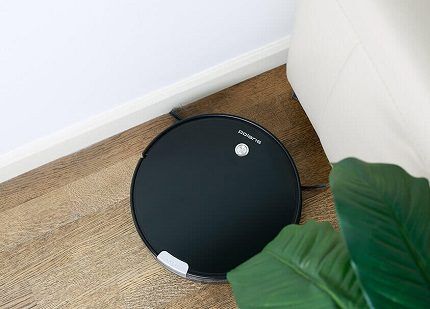
To save energy, a “sleep mode” is provided, into which the device automatically enters within 45 seconds from the standby state if no buttons are pressed.
In this case, the vacuum cleaner is activated from “hibernation” when the timer is triggered or when the user presses a button "Auto" on the body.
Modes and types of cleaning
If the vacuum cleaner allows you to perform dry and wet cleaning of the room, then first pick up dry garbage, and then turn on the mode using water.
The choice of movement trajectory for both types of cleaning occurs automatically - the robot’s electronics itself determines the optimal trajectory.
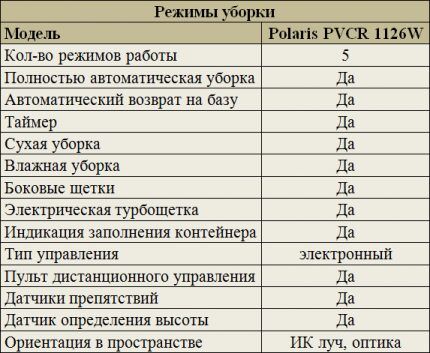
The first sign of a full dust bin is an increase in noise. As soon as the air flow resistance increases, the protection system is activated.
As a result, the robot stops working and an indication signal sounds. To continue cleaning, you need to clean the container or clogged filter.
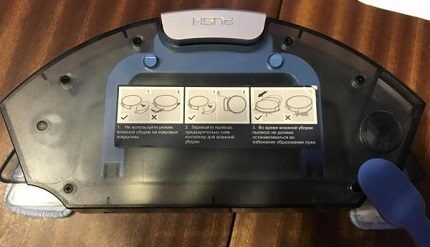
Starting and stopping the room cleaning cycle can be done either by pressing a button on the robot body or using the remote control.
All other settings can only be made using the remote control:
- Trigger by timer. It is necessary to set the current time and the start of daily operation of the device. To start, the vacuum cleaner must be turned on and the charging base must be powered from the mains.
- Manual control movement of the vacuum cleaner. This is done using the arrow buttons.
- Forcing a robot to be sent to the base for charging.
- Activating local cleaning mode.
Cleaning of a local area is carried out when it is heavily contaminated. The robot moves within one square meter relative to its position along a spiral path.
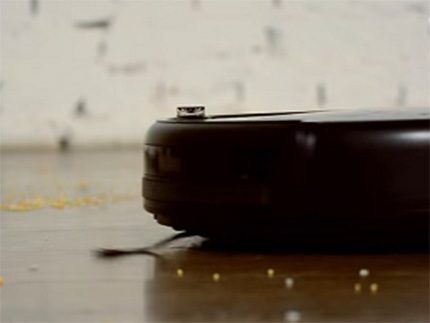
Rules for caring for the robot
Cleaning of PVCR 1126W is carried out to ensure its normal functioning and maintain its beautiful appearance.
Before the procedure, the vacuum cleaner must be turned off and disconnected from external electricity. When wiping the base or charger, they must also be de-energized.
The metal parts of the vacuum cleaner must be wiped with a dry and clean cloth. Plastic parts are treated with a damp cloth without the presence of individual drops on it.
Infrared sensors should be cleaned with a soft cloth, but no physical pressure should be applied to them to avoid changing the direction of the beam.
The side brushes should be inspected periodically for damage or stuck solid objects. If defects are found, this part will need to be replaced.
Otherwise, there will be a noticeable deterioration in the quality of cleaning. The brushes are wiped with a damp, well-wrung cloth.
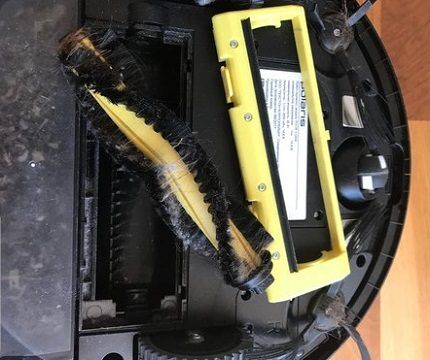
If the roller is heavily soiled, it must be removed.
To do this, perform the following steps:
- by moving the locking tabs, remove the roller mounting frame;
- remove the roller by lifting the right side of the part and pulling it to the right;
- remove dirt using a sharp knife or scissors;
- install the roller in place.
In case of severe contamination that is difficult to remove at home, it is better to contact a service center.
Washing the HEPA filter and then drying it should be done 1-2 times a month, and it is recommended to change it once every six months.

Not only this, but also other robotic vacuum cleaners of this brand are popular. We invite you to familiarize yourself with the most popular among them. More details - go to link.
Pros and cons of this model
When choosing a specific model, it is customary to compare it with similar devices in a similar price range. Analysis of other robots and user reviews revealed the positive and negative properties of the PVCR 1126W vacuum cleaner.
Most “classmates” of the Polaris PVCR 1126W model have a battery life of 1-1.5 hours.
The presence of a capacious lithium-ion battery and low rated power made it possible to overcome the three-hour mark for continuous cleaning. This allows the robot to be used effectively in large rooms with little dust.
The low height allows the device to fit under beds, cabinets and other furniture with legs that do not have a false wall. If you do not clutter up the space, the robot will remove accumulated dust there.
This is very convenient, since using an ordinary vacuum cleaner or mop to clean such places is difficult.
The water container means there is no need to manually wet the cloth every 2-3 minutes, which allows you to leave the vacuum cleaner with the wet cleaning mode turned on without human supervision.

According to user reviews, this vacuum cleaner model efficiently removes any type of debris. The low rated power is compensated by the clever design of the central brush.The robot’s good cross-country ability is also noted.
The stylish, eye-catching design of the vacuum cleaner is made in black tones and complemented by a tempered glass insert. Although the lack of other color options can be considered a minus.
Among the disadvantages, it should be noted that the PVCR 1126W model does not have a “virtual wall” system that limits the cleaning area, and there is no construction of a floor plan, which causes difficulties when it is necessary to clean only part of the room.
Therefore, it is impossible to wet clean the area where there is carpet, since the vacuum cleaner will definitely get there. Many models in this price category do not have such shortcomings. Therefore, if you need a robotic carpet cleaner, it is better to turn your attention to the following rating.
Some problems are caused by the lack of indication and automatic stop of the robot when the tank is empty. Working “dry” results in quick wiping of the microfiber cloth.
Robot vacuum cleaners sold under the Polaris brand have a relatively high noise level.
Comparison with competitive models
Next, for clarity, we will compare the PVCR 1126W robotic vacuum cleaner from Polaris with other robotic cleaners popular among users.
Competitor #1 - Philips FC8792 SmartPro Easy
It is a very compact cleaner model with a height of only 5.85 cm, but despite this, a spacious dust container (0.4 l) is installed here.
Optical sensors are responsible for the smooth operation of the Philips FC8792 SmartPro Easy, and control is carried out using the remote control. The device can be programmed to clean on certain days.
The FC8792 SmartPro Easy vacuum cleaner is intended only for dry cleaning of premises, can automatically select a cleaning mode and returns to the base for recharging.
According to user reviews, the advantages of this model include: quiet operation of the device, high-quality cleaning, the ability to clean even under furniture, affordable cost.
Among the shortcomings, some users named: the lack of a motion limiter and a wet cleaning function.
Competitor #2 – Genio Deluxe 370
Genio Deluxe 370 is one of the main competitors of the PVCR 1126W. It does not have such a disadvantage as the inability to select operating modes. What significantly limits the effectiveness of a Polaris brand vacuum cleaner in rooms with complex wall geometry or numerous furniture
The Deluxe 370 vacuum cleaner is one of the most functional and quiet devices in its price segment, its noise level is only 45 dB.
Having compact dimensions, the device has a fairly capacious cyclone filter with a volume of 0.65 liters. And among the additional options, the manufacturer has provided a function for collecting liquids, as well as an indicator for filling the dust container.
On the positive side, users noted the good quality of cleaning - the device copes well with both smooth and carpeted floor coverings. Pet owners will also not be disappointed - the vacuum cleaner can even handle their pets' hair.
Of the shortcomings, only one was mentioned: the Genio Deluxe 370 cannot clean under low furniture.
Competitor #3 - iRobot Roomba 616
This is the largest model of all competitors PVCR 1126W, designed for dry cleaning of premises. It is powered by a 2200 mAh battery and has a battery life of about two hours.
The device can be controlled using the remote control. To improve the quality of cleaning in hard-to-reach places, the manufacturer has provided a side brush.
Users who managed to purchase the iRobot Roomba 616 note the good quality of cleaning. The vacuum cleaner copes well with both small and large debris and cleans both smooth and carpeted surfaces with equal quality.
Among the negative aspects, some users mention that the device takes a long time to find the base, and is also very noisy.
A detailed review of this robot vacuum cleaner model can be found Here.
Conclusions and best offers on the market
The PVCR 1126W model produced by Polaris can be considered a classic representative of robotic vacuum cleaners for the price niche of about 15 thousand rubles. The main difference of the unit is the increased battery life.
It has other advantages, as well as disadvantages, so to make the right choice you need to compare the declared characteristics and the disadvantages identified by consumers with the characteristics of a particular room.
If you are the owner of such a robot vacuum cleaner, please tell our readers about your experience using the device. Indicate your attitude towards the model, upload photos in the comments section.


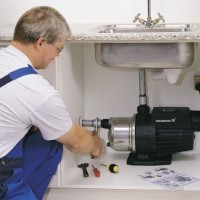
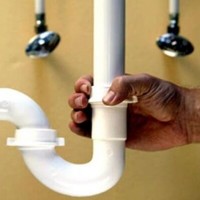
Good afternoon You indicated that this vacuum cleaner resembles the 0926w model. And if the choice is between 1126w and 0926w, which model is better?
I have trusted Polaris for a very long time, it meets all my expectations. A lot of household electronic equipment was purchased from them. The price corresponds to the quality. From my personal use of robotic vacuum cleaners, I can say that you need to choose a more expensive model.There is no need to skimp in this regard because many of the disadvantages are very significant when it comes to cleaning.